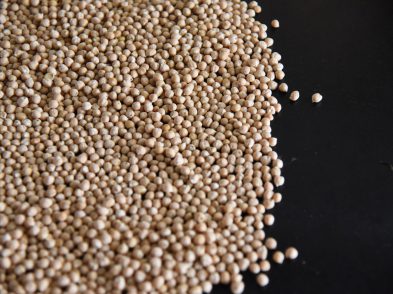The Alinari National Museum of Photography has just opened Robert Capa in Italia 1943–1944, a poignant exhibition of work by this Hungarian photojournalist renowned for his images of war. Capa had an extensive and prolific career, working in 23 countries and chronicling 5 major wars. Though previous Capa retrospectives have been presented in Milan, Verona and Turin, this Capa show, which made an earlier stop at Rome’s Palazzo Braschi, is the first Capa exhibit in Italy to focus entirely on his work in Italy.
The exhibition, which is up until February 23, is part of Italy’s Year of Hungarian Culture 2013–2014, which coincides with the centennial anniversary of Capa’s birth. Consisting of 78 black-and-white photos, the exhibition covers the period Capa spent in Italy during World War II, beginning with the invasion of Sicily in July 1943 and ending with the landings at Anzio in February 1944.

Photographs by Robert Capa © International Center of Photography/Magnum – Collection of the Hungarian National Museum
Capa is considered by many to be the father of photojournalism, producing some of his best photos while working for Life magazine from 1941 to 1945. Despite the fact that he was never a soldier, he spent most of his life in war zones. An introductory text in the first room of the museum recounts how he struggled with calling the world’s attention to suffering.

The images on display are far more than simply scenes of destruction and danger. Head of the Hungarian National Museum, Beatrix Lengyel, called Capa ‘not just a war photographer, but someone who astutely showed characters and faces in his work.’ Many of the photos depict soldiers and civilians engaged in everyday activities within the context of wartime: ambulance drivers taking knitting breaks, Italian civilians conversing with American soldiers, children crowding streets to watch troops pass by. Sobering portraits of captured soldiers or wounded civilians show the photographer’s keen perception of his subjects’ humanity.

One of the exhibition’s opening photos is a typically idyllic image of the Sicilian countryside near Troina. Casual viewers, however, could overlook the long line of American soldiers marching up the hillside in the foreground. The lush landscape juxtaposed with the activity of warfare creates a thought-provoking contrast, one that modern viewers might relate to current events around the world.
The exhibition offers a powerful overview of a particular moment in history. Lengyel noted, however, that there is still much to be studied and discovered about Capa’s time in Italy, explaining that this effort ‘offers only the initial steps.’
ROBERT CAPA IN ITALIA 1943–1944
Until February 23, 2014
Museo Nazionale Alinari della Fotografia
Piazza Santa Maria Novella, 14, Florence
Hours: Thursday through Tuesday, 10am to 6.30pm







